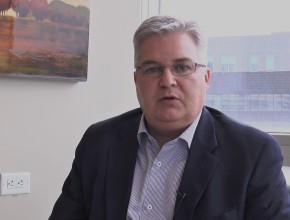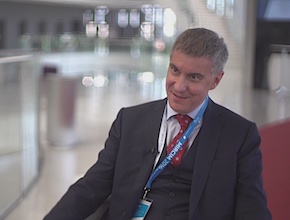Related McMaster Perspective episodes
Guyatt G, Jaeschke R. SPRINT trial and blood pressure treatment.Yusuf S, Panju A, Jaeschke R. HOPE-3, BP treatment, milestones in CV prevention.
References
SPRINT Research Group, Wright JT Jr, Williamson JD, Whelton PK, et al. A Randomized Trial of Intensive versus Standard Blood-Pressure Control. N Engl J Med. 2015 Nov 26;373(22):2103-16. doi: 10.1056/NEJMoa1511939. Epub 2015 Nov 9. PubMed PMID: 26551272; PubMed Central PMCID: PMC4689591.Lonn EM, Bosch J, López-Jaramillo P, et al; HOPE-3 Investigators. Blood-Pressure Lowering in Intermediate-Risk Persons without Cardiovascular Disease. N Engl J Med. 2016 May 26;374(21):2009-20. doi: 10.1056/NEJMoa1600175. PubMed PMID: 27041480.
Yusuf S, Bosch J, Dagenais G, et al; HOPE-3 Investigators. Cholesterol Lowering in Intermediate-Risk Persons without Cardiovascular Disease. N Engl J Med. 2016 May 26;374(21):2021-31. doi: 10.1056/NEJMoa1600176. Epub 2016 Apr 2. PubMed PMID: 27040132.
Yusuf S, Lonn E, Pais P, et al; HOPE-3 Investigators. Blood-Pressure and Cholesterol Lowering in Persons without Cardiovascular Disease. N Engl J Med. 2016 May 26;374(21):2032-43. doi: 10.1056/NEJMoa1600177. Epub 2016 Apr 2. PubMed PMID: 27039945.
Roman Jaeschke: During your [lecture at MIRCIM 2016, Hypertension: Facts, fiction, and follies], you presented some data from the SPRINT trial and I see that my colleagues and myself are struggling these days with 2 questions. Question 1: When to start treatment of hypertension? Question 2: What to target as a level? I wonder if you could expand on that.
Franz H. Messerli: When you have a patient sitting in front of you, you may ask the question: should I treat or should I not treat. That is a fairly common question. This patient is, let’s say, 35 years old, his blood pressure is around 140 over 90 mm Hg. Should I expose this patient to antihypertensive therapy or not? To my way of thinking, usually I rather shoot first and ask questions later. In other words, if I tell this patient: “Look, you should lose weight, you should go on a low-salt diet, you should exercise more, and then come back in 6 months,” I have lost 6 months, because he or she comes back and is exactly the same shape as before. I rather tell this patient: “Let’s start you on an angiotensin receptor blocker (ARB) and blood pressure will be down. And now that the blood pressure is down, you continue exercise, or you start exercise, you lose weight, you restrict your salt intake, and if that all has happened in 6 months, I will be perfectly happy to take you off the antihypertensive drugs.” That is a fairly easy way to proceed with a patient.
The other question is: how low should you go? Is the right way of thinking much more a population question than an individual patient question? Because as you look at the patient, you try to do the best you can so that the patient does not have any side effects. Obviously, if the patient is 87 years old and comes in with a blood pressure of 170 over 90 mm Hg, you will never go to 120 over 70 mm Hg in such cases. It is just not feasible.
RJ: Unless you want to harm them?
FM: Unless you want to harm them. The patient will be harmed. He or she will have a hip fracture at night, getting up and falling on the floor. You adjust the blood pressure level – so to speak – to the patient in front of you. I think all these big words about how low should you go, what is acceptable, usually are not a big issue for the clinician, because the clinician tries to do a good job and obviously knows that the blood pressure can be too low. You will know a blood pressure of 0 has a 100% mortality, so there must be a J curve, somewhere around blood pressure is too low, and morbid events will increase. It is as simple as that.
RJ: Very informative again. One, I hope, practical question – and I know it is really hard to describe the patient – but reflecting on the SPRINT trial, reflecting on all the things [such as] how the blood pressure was measured in this trial, let’s say that if we were to use it literally, we have some evidence that going low, around 120 mm Hg, may be beneficial, but we consider hypertension to start at 140 mm Hg. The question would be: in front of you there is a patient with a major cardiovascular risk factor and blood pressure of 135 mm Hg, not yet hypertensive but higher than what we know the SPRINT trial target would be. I am not sure whether the question is clear, but what would be your thinking in such cases?
FM: The question is: should we treat normotensive patients with antihypertensive drugs?
RJ: That is correct. How we define hypertension today.
FM: Right. We define hypertension still as a blood pressure above 140 over 90 mm Hg. When you look at the HOPE-3 trial, there was no effect with candesartan/hydrochlorothiazide in such patients. When you look at the SPRINT trial, which was chlorthalidone-based, there was an effect, so to speak. So is it the difference between chlorthalidone and hydrochlorothiazide? We wrote a letter to the editor of the New England Journal of Medicine on this issue and I do not know whether it is that or not. It is very hard to say.
What we should do in any case in that patient is put him or her on a statin. There is no question about that. That will reduce stroke, heart attack, and death, as shown in the HOPE-3 study, even if low-density lipoprotein (LDL) cholesterol is normal, even if blood pressure is normal. Instead of thinking antihypertensive, maybe we should think statins.
RJ: If we decide to use an antihypertensive agent, it should be low-dose chlorthalidone or indapamide rather than hydrochlorothiazide.
FM: Rather than hydrochlorothiazide. Maybe a low dose of amlodipine of 2.5 mg – that is very well tolerated in general.
RJ: Amazingly practical information. Thank you very much for these answers and for being with us.
FM: Delighted to be here. Thank you so much.
This interview was recorded at the 2nd McMaster International Review Course in Internal Medicine in Kraków, Poland. To learn more, visit www.mircim.eu.
 English
English
 Español
Español
 українська
українська







